I want to find the distance of samples to the decision boundary of a trained decision trees classifier in scikit-learn. The features are all numeric and the feature space could be of any size.
I have this visualization so far for an example 2D case based on here:
import numpy as np
import matplotlib.pyplot as plt
from sklearn.tree import DecisionTreeClassifier
from sklearn.datasets import make_moons
# Generate some example data
X, y = make_moons(noise=0.3, random_state=0)
# Train the classifier
clf = DecisionTreeClassifier(max_depth=2)
clf.fit(X, y)
# Plot
x_min, x_max = X[:, 0].min() - 1, X[:, 0].max() + 1
y_min, y_max = X[:, 1].min() - 1, X[:, 1].max() + 1
xx, yy = np.meshgrid(np.arange(x_min, x_max, 0.1), np.arange(y_min, y_max, 0.1))
Z = clf.predict(np.c_[xx.ravel(), yy.ravel()])
Z = Z.reshape(xx.shape)
plt.contourf(xx, yy, Z, alpha=0.4)
plt.scatter(X[:, 0], X[:, 1], c=y, s=20, edgecolor='k')
plt.xlabel('a'); plt.ylabel('b');
I understand that for some other classifiers like SVM, this distance can be mathematically calculated [1, 2, 3]. The rules learned after training a decision trees define the boundaries and may also be helpful to algorithmically calculate the distances [4, 5, 6]:
# Plot the trained tree
from sklearn import tree
import graphviz
dot_data = tree.export_graphviz(clf, feature_names=['a', 'b'], class_names=['1', '2'], filled=True)
graph = graphviz.Source(dot_data)


